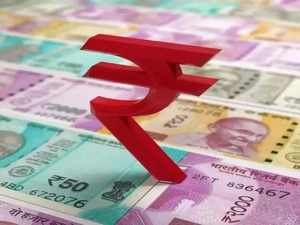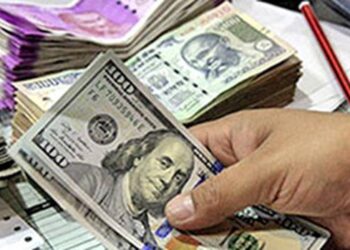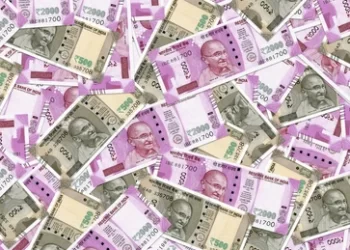The Indian rupee falls to a record low of 83.88 to the dollar, significantly below the previous all-time low of 83.845 per dollar. Cues from global equities markets, concerns about the US recession, and the unwinding of a popular yen carry trade all had an impact on currency market mood. The non-deliverbale forwards (NDF) signals suggest that the currency may also fall below 84 to the dollar. Given the volatility in global markets, the Reserve Bank of India’s likely intervention in the non-deliverable forward, local spot, and currency futures markets provided some support for the rupee.
FPI selling weighing on rupee
The rupee’s 1-month realized volatility is 1.1%, the lowest among major Asian currencies. On August 5, overseas investors withdrew more than $1 billion from Indian markets. This also affected the rupee as the yen fell. Rahul Kalantri, VP Commodities at Mehta Equities, stated, “Foreign portfolio investors (FPIs) withdrew Rs 10,073 crore ($1.2 billion) from the markets on Monday, putting more pressure on the currency. The Japanese yen jumped to seven-month highs against the dollar as traders aggressively unwound carry positions, fueled by economic data from the previous week that raised the prospect of a US economic slump and more significant Fed rate reduction. The Japanese index had its worst day in 37 years. Despite a sharp drop in the dollar index and a significant drop in crude prices, the rupee remained weak. We propose attentively monitoring the important level of 83.70-83.85 before entering fresh positions in the currency pair, with the rupee anticipated to hit levels of 84.22-84.40 in the next days.”
Yen carry trade connection
The unwinding of the yen carry trade has also contributed significantly to the rupee’s recent decline. The Bank of Japan raised interest rates to 0.25% on July 31. More notably, it has agreed to reduce its monthly purchase of Japanese government bonds (JGBs) by half, to 3 trillion yen ($20 billion), in January-March 2026. The sum will be reduced.
In principle, each calendar quarter will see a decrease of approximately 400 billion yen. According to Vinay Paharia, CIO of PGIM India Mutual Fund, “This decision resulted in an unexpected and significant rise of the Japanese yen. The cost of borrowing in yen and investing outside Japan has increased. Borrowing in other currencies and investing in liquid Japanese assets may actually grow more advantageous over time. As a result, demand for the yen is expected to increase relative to other currencies, causing it to strengthen. Furthermore, the hawkish tone of the BoJ Governor implied that interest rates could climb further. The yen had also been severely undervalued on a real effective exchange rate basis, forcing a sharp normalization.”
Global asset markets have seen significant correction in the last couple of days.
Source:FE







 Finance
Finance





